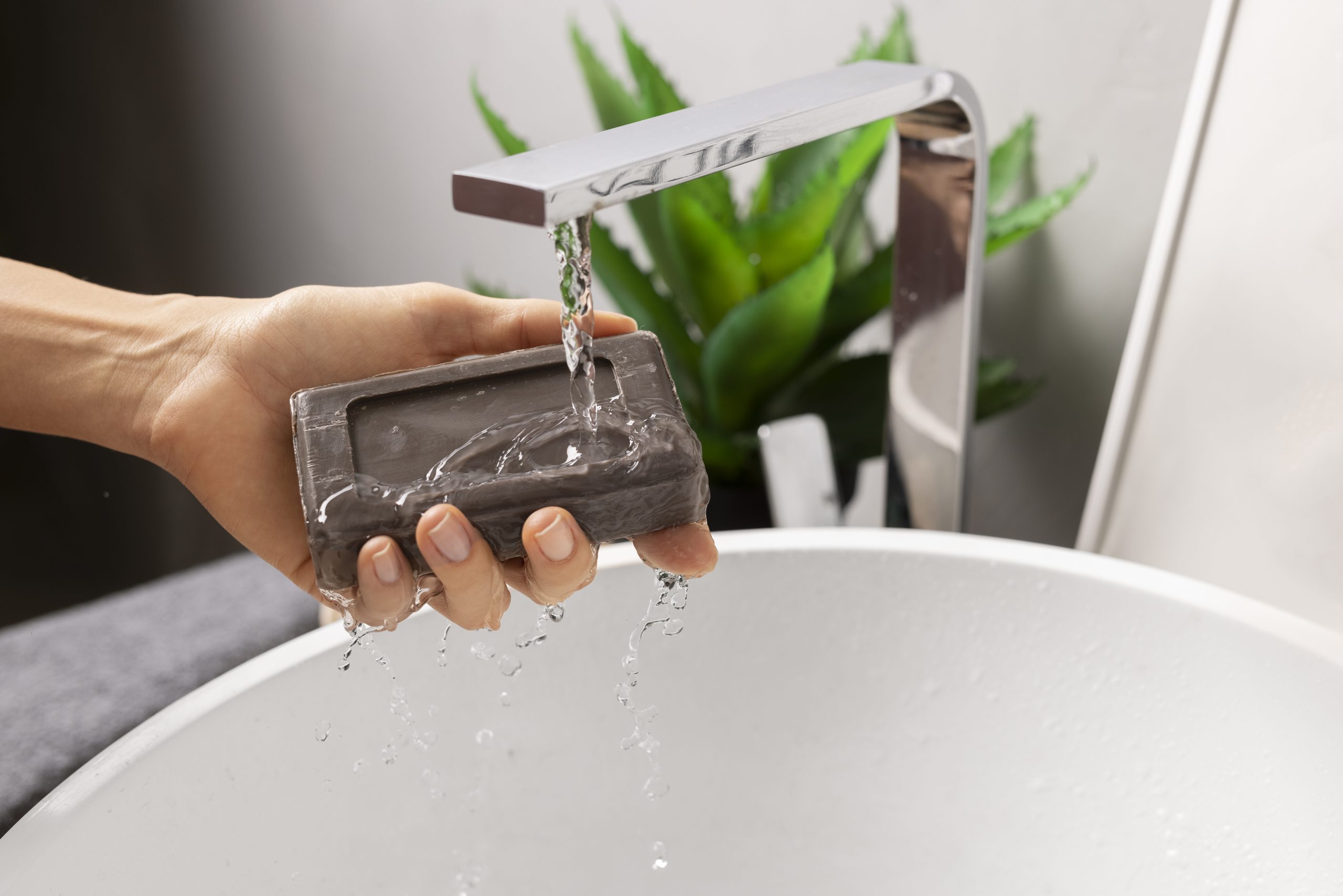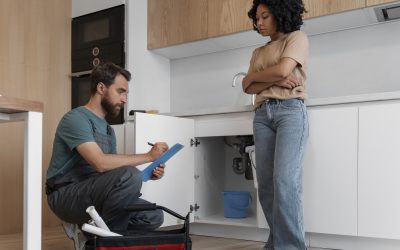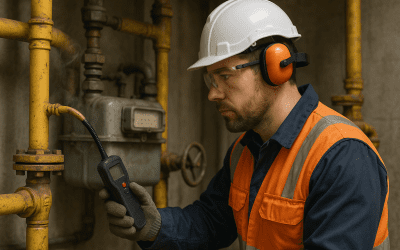11 Reasons For Low Water Pressure In the House
1. Faulty Pressure Regulator
A pressure regulator controls how much water enters your home. When this component wears out, it may stick in a low water pressure setting or respond sluggishly to changes in supply pressure. This mechanical failure restricts water flow throughout the house, often resulting in a consistent but weak stream from every tap.
2. Leaking Pipes
Water loss through cracked or punctured pipes lowers pressure at the fixture level. Even minor leaks in hidden areas like crawlspaces or underground sections reduce the volume of water reaching showers, faucets, and appliances. These leaks may be caused by shifting soil, poor insulation, or deteriorated joints, and often require the attention of experienced plumbers in Schertz or Cibolo to locate and repair them effectively.
3. Clogged Pipes and Fixtures
Over time, minerals and sediment can build up inside pipes, especially in areas with hard water, narrowing the pipe’s interior and restricting water flow. Fixtures like showerheads and faucets have fine mesh screens, such as aerators, that filter out particles and regulate water spray. When these screens become clogged with mineral deposits or debris, they reduce water output, often affecting only specific fixtures and sometimes appearing suddenly without warning.
4. Old or Corroded Plumbing
Aging plumbing, particularly galvanized steel or iron pipes, corrodes from the inside. Rust forms flakes and rough surfaces that slow water flow. Unlike blockages from debris, corrosion permanently alters the pipe structure, often requiring replacement to restore normal pressure.
5. Water Supply Issues
Sometimes the problem comes from the municipal water supply. City-wide maintenance, water main breaks, or infrastructure limitations can cause temporary or extended drops in water pressure. Homes on higher ground or farther from the main line tend to feel the effects more severely.
6. Shared Pipelines
When multiple homes or apartments share a single supply line, water demand in one unit impacts others. During peak usage, like mornings or evenings, pressure may drop due to overuse. This issue is especially common in older neighborhoods with outdated plumbing layouts.
7. Valves Are Partially Closed
Main shut-off valves or appliance-specific valves may be accidentally left partially closed after repairs. When not fully open, they restrict the flow into the system. A partially closed valve doesn’t stop water completely, but creates enough resistance to weaken pressure significantly.
8. Branch Lines Are Too Small
Plumbing systems rely on correctly sized pipes to handle household water demand. Branch lines that are too narrow can’t deliver enough water to multiple fixtures at once. This design flaw becomes obvious when using two or more water outlets simultaneously.
9. Using Too Many Water-Using Appliances at Once
Household appliances like dishwashers, washing machines, and showers draw water from the same source. When used together, they strain your home’s water capacity. The system doesn’t malfunction, it just can’t keep up with the demand, causing a noticeable pressure drop.
10. Sewer or Drainage Issues
When sewer or drainage pipes are blocked with debris, grease, or other materials, or if the ventilation system is poorly installed or clogged, it can create a vacuum effect in your plumbing. While this doesn’t directly reduce the incoming water pressure, it disrupts proper water and air flow within the pipes. This can cause slow drainage, gurgling noises, and water flow problems in sinks, toilets, and showers that often feel like low water pressure. Essentially, the blockage interferes with the drainage system’s ability to function smoothly, leading to symptoms that mimic pressure loss.
11. Water Heater Problems
If only hot water has low water pressure in the house, the water heater may be the issue. Sediment can clog the unit’s outlet or heating chamber, restricting flow. A failing dip tube or blocked mixing valve can also interfere with the delivery of hot water at full pressure.
What Professionals Can Do For Low Water Pressure?
Inspect and Repair Plumbing Fixtures
Technicians remove and disassemble aerators, showerheads, and faucets to look for sediment or mechanical failures. They assess the flow rate at individual fixtures and compare it against normal benchmarks. Damaged components, such as worn-out cartridges or cracked seals, are replaced to restore original performance without affecting other fixtures.
Test and Adjust Pressure Regulators
Using specialized tools, plumbers check the output pressure at the regulator and determine if it matches manufacturer specifications (typically 40–60 psi). If it falls outside that range, they recalibrate the unit by adjusting its screw mechanism. In cases where the regulator’s internal spring or diaphragm has failed, they may recommend replacing it entirely.
Check for Leaks
Professionals conduct pressure drop tests by isolating water lines and monitoring system response. They may use infrared cameras, acoustic sensors, or tracer gas to locate hard-to-find leaks in walls, underground lines, or slab foundations. Once detected, they repair or replace the damaged sections to restore optimal pressure.
Flush the System
If mineral buildup or sediment is the problem, plumbers flush the system by opening multiple outlets and forcing high-flow water through the lines. In severe cases, they may apply chemical descaling agents or use a pipe jetting system to break up internal obstructions. This process is particularly effective in homes with hard water or infrequent pipe maintenance.
Upgrade or Replace Piping
If the existing plumbing is outdated or undersized, professionals may recommend replacing sections with modern materials like PEX or copper. They ensure that new branch lines are correctly sized based on fixture load, distance, and water demand. This structural upgrade eliminates persistent low-pressure issues caused by narrow or degraded pipes.
Install a Booster Pump
For homes with consistently low municipal supply, professionals can install a booster pump system. These pumps are placed near the main water line and include a pressure sensor and storage tank. They automatically activate when pressure drops, providing a steady, amplified flow throughout the house.
Conclusion
Low water pressure is a warning sign that shouldn’t be ignored. Addressing it early can protect your home’s plumbing system and make everyday tasks easier and more efficient. If you’re unsure about the cause or how to fix it, don’t hesitate to contact Local Plumbing, LLC. Our experienced plumbers in Cibolo, Schertz, New Braunfels, and San Antonio will quickly diagnose the issue and restore your home’s water pressure to optimal levels, taking the guesswork out of the process and giving you peace of mind.




